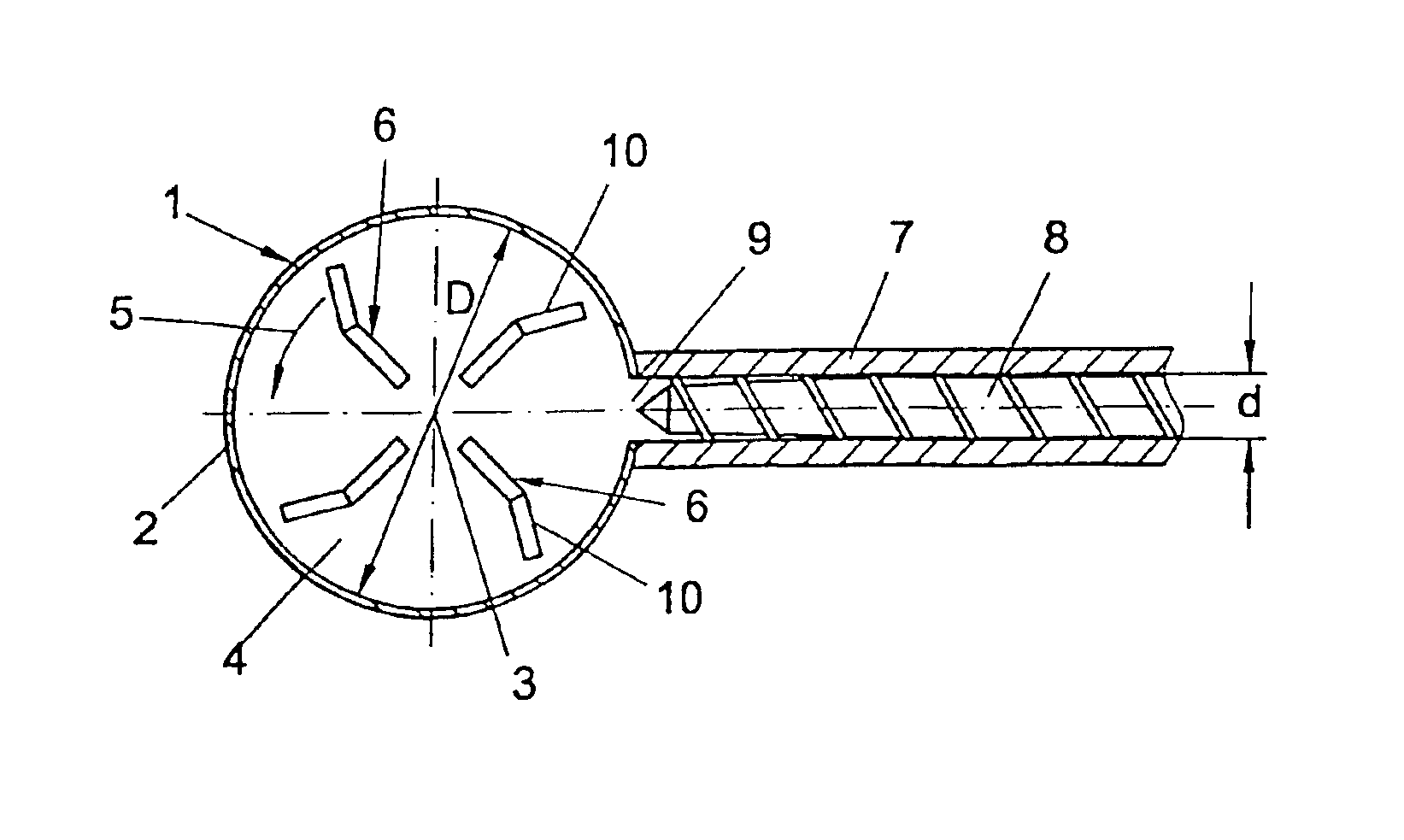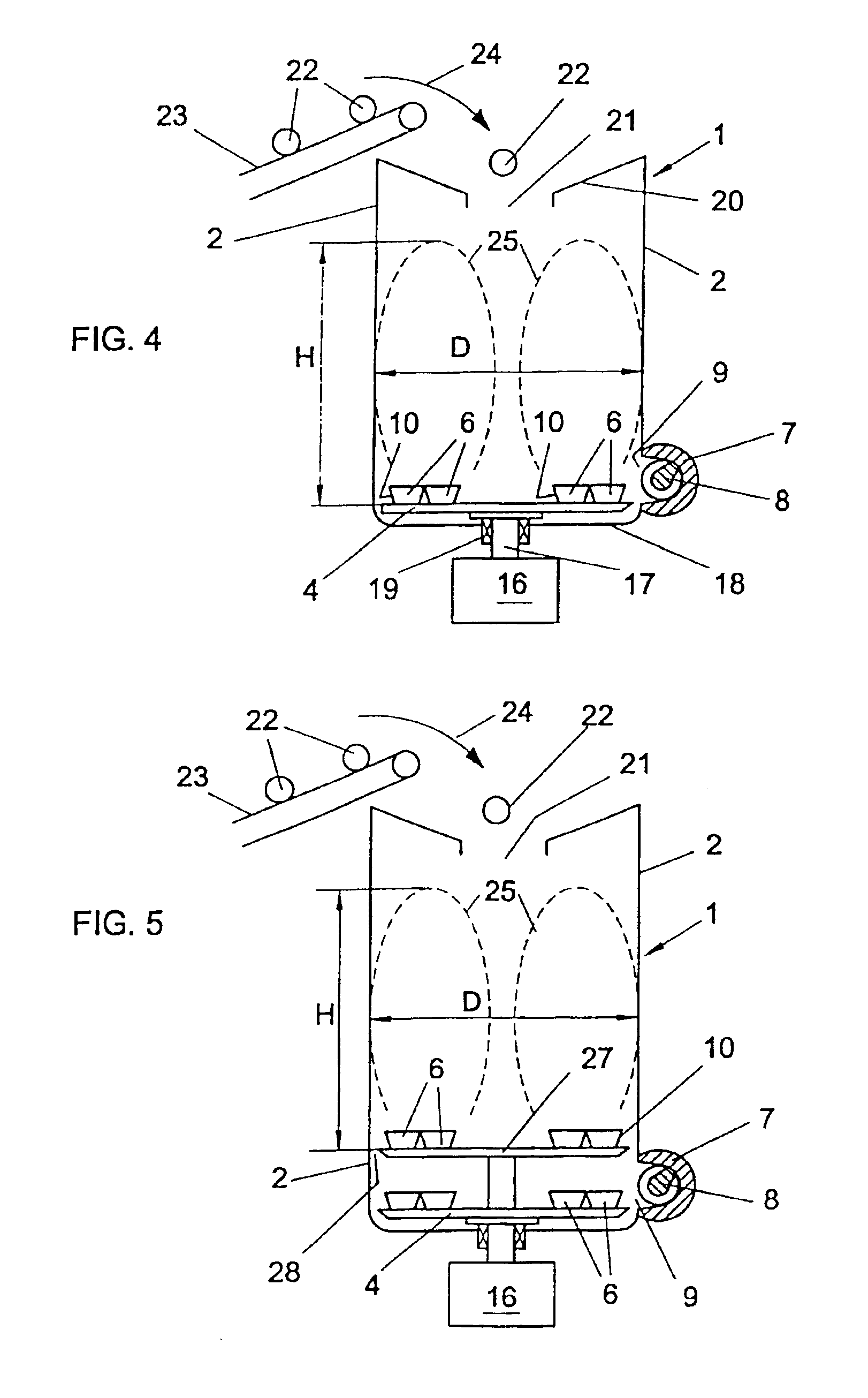Apparatus for pre-treatment and subsequent plastification or agglomeration of synthetic plastic materials
a technology of synthetic plastic materials and apparatuses, which is applied in the field of apparatuses for pretreatment and subsequent plastification or agglomeration can solve the problems of affecting the molecule chain of synthetic plastic materials, processing materials are subjected to higher mechanical and thermical stresses, and the quality of the known constructions is not met, so as to achieve constant material quality, the effect of reducing the temperature profile of the extruder and ensuring the quality of the material
- Summary
- Abstract
- Description
- Claims
- Application Information
AI Technical Summary
Benefits of technology
Problems solved by technology
Method used
Image
Examples
Embodiment Construction
[0045]The drawings, for space reasons, are not true to scale, because in reality the receptacles are always much bigger than they are shown in the drawing.
[0046]In the embodiment according to FIG. 1 the apparatus, forming a shredder-extruder combination, comprises a receptacle 1 having a circular cross-section, the side wall 2 of it being substantially cylindrical. Within the receptacle 1 a carrier disc 4 rotates around a central vertical axis 3, which disc is driven from below by a drive means (not shown) so that it rotates in the direction of the arrow 5. The carrier disc 4 is disposed in the bottom region of the receptacle 1 and carries on its top surface a plurality of comminuting and mixing tools 6 acting on the synthetic plastic material to be processed, which is introduced into the receptacle from above, as a rule thermoplastic recycling material, in a comminuting and mixing manner. Substantially at the level of these circulating tools 6, the housing 7 of a screw 8 is radiall...
PUM
| Property | Measurement | Unit |
|---|---|---|
| temperature | aaaaa | aaaaa |
| dwell time | aaaaa | aaaaa |
| height | aaaaa | aaaaa |
Abstract
Description
Claims
Application Information
 Login to View More
Login to View More - R&D
- Intellectual Property
- Life Sciences
- Materials
- Tech Scout
- Unparalleled Data Quality
- Higher Quality Content
- 60% Fewer Hallucinations
Browse by: Latest US Patents, China's latest patents, Technical Efficacy Thesaurus, Application Domain, Technology Topic, Popular Technical Reports.
© 2025 PatSnap. All rights reserved.Legal|Privacy policy|Modern Slavery Act Transparency Statement|Sitemap|About US| Contact US: help@patsnap.com



